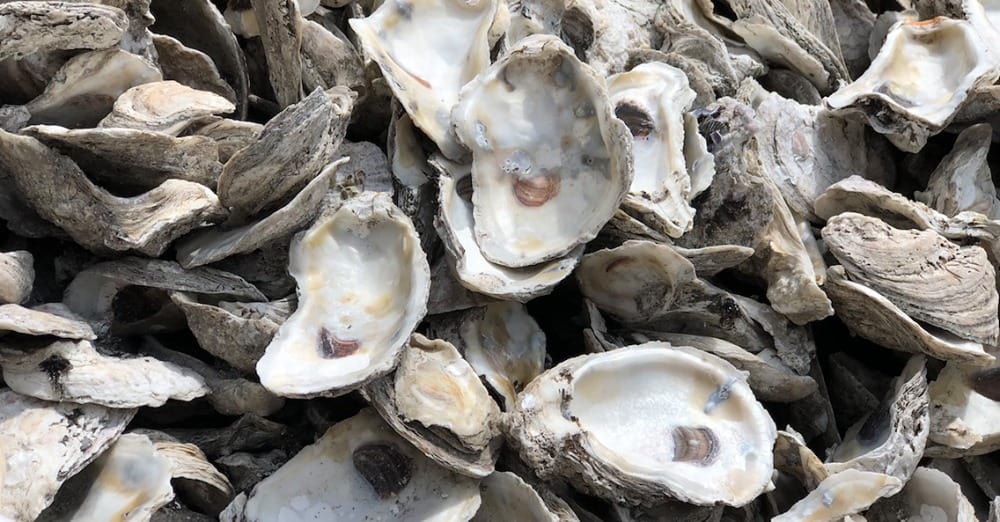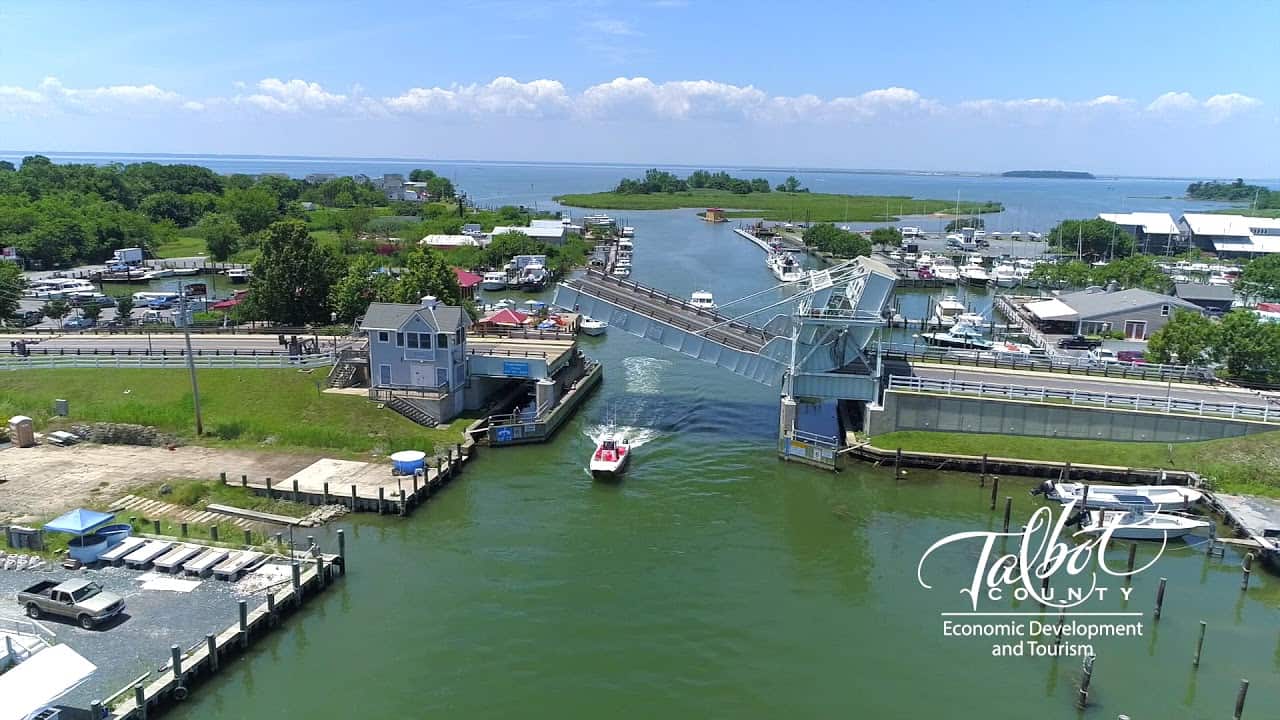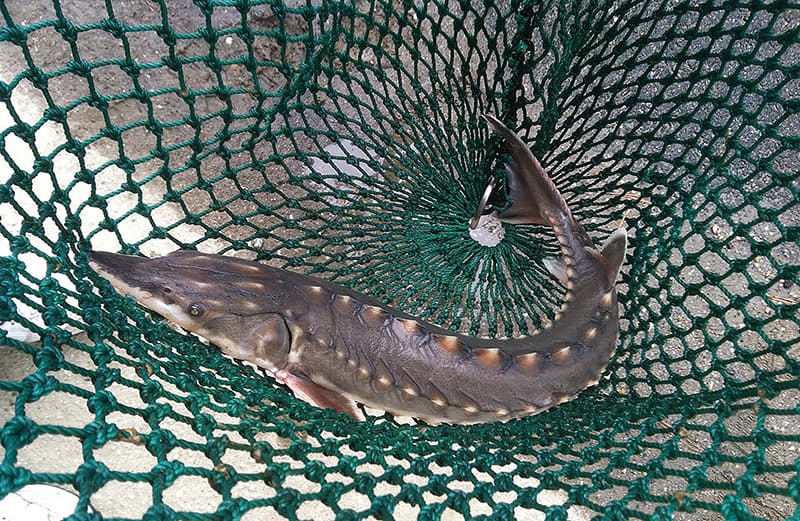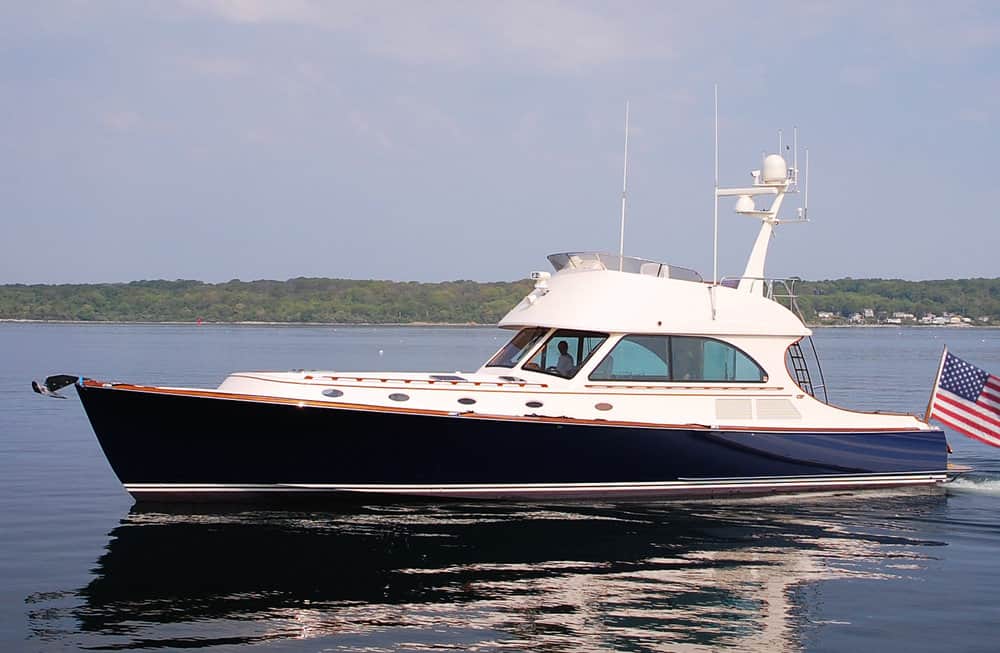Last week Bay Bulletin reported on a record number of Chesapeake Bay oysters shucked; this week there’s another new oyster record to celebrate: a Hampton, Virginia restaurant has recycled more oyster shells than any other member of the Chesapeake Bay Foundation’s (CBF) shell recycling program.
Fuller’s Raw Bar, just a few blocks in from Mill Creek in Hampton, has recycled some 390,000 oyster shells since the start of 2019. That’s the most shell to come from a single source in CBF’s Virginia Oyster Restoration Program in recent years.
The sum of shells totals 472 bushels, enough to seed nearly four acres of sanctuary reefs in the Bay. With each recycled oyster shell hosting about 10 baby oysters when they are planted on reefs, Fullers’ recycling effort makes a real impact for oyster restoration. In addition to the bivalve’s water-filtering qualities, the reefs become habitat for fish, crabs, and other marine life.
CBF works with dozens of Virginia restaurants to collect empty oyster shells after meals, but with the restaurant industry struggling, the Oyster Restoration team didn’t expect to see its best numbers ever.
“Given the challenges everyone has faced during COVID restrictions, we honestly had concerns about our efforts to bring back oysters in the Chesapeake Bay,” said CBF Virginia Oyster Restoration Manager Jackie Shannon. “Fuller’s Raw Bar and many other restaurants around Virginia overcame huge hurdles this year while continuing to support oyster restoration.”
Fuller’s Raw Bar has recycled oyster shells with CBF since it opened in 2019.
“Recycling oyster shells is just the responsible thing for us to do. Instead of ending up in a landfill, all these shells are going back in the water to become part of oyster reefs,” said Fuller’s Raw Bar Executive Chef and Owner John Ledbetter. “It makes me and my partners very proud to know that we’re contributing to the health of the Bay.”
Oysters planted through CBF’s programs went to the Lynnhaven, Lafayette, and Rappahannock, and York rivers, as well as on Virginia’s Eastern Shore. CBF’s work in Virginia is part of the Chesapeake Oyster Alliance‘s effort to add 10 billion oysters to the Bay through sancutary reefs.
For a full list of shell drop-off bins, visit this link.
-Meg Walburn Viviano




